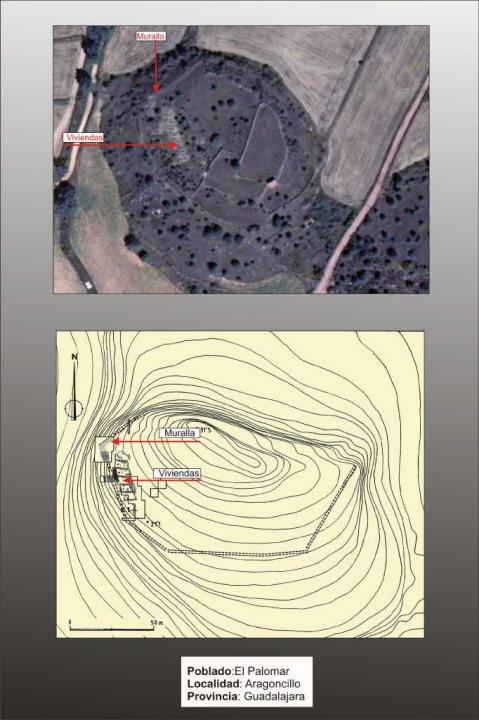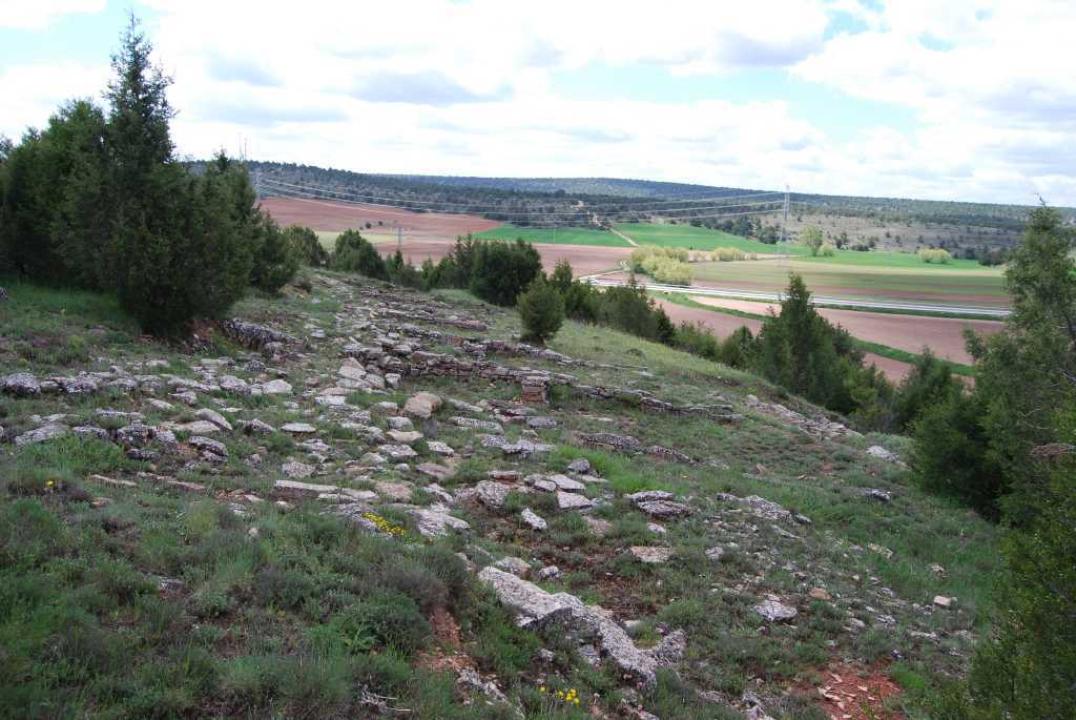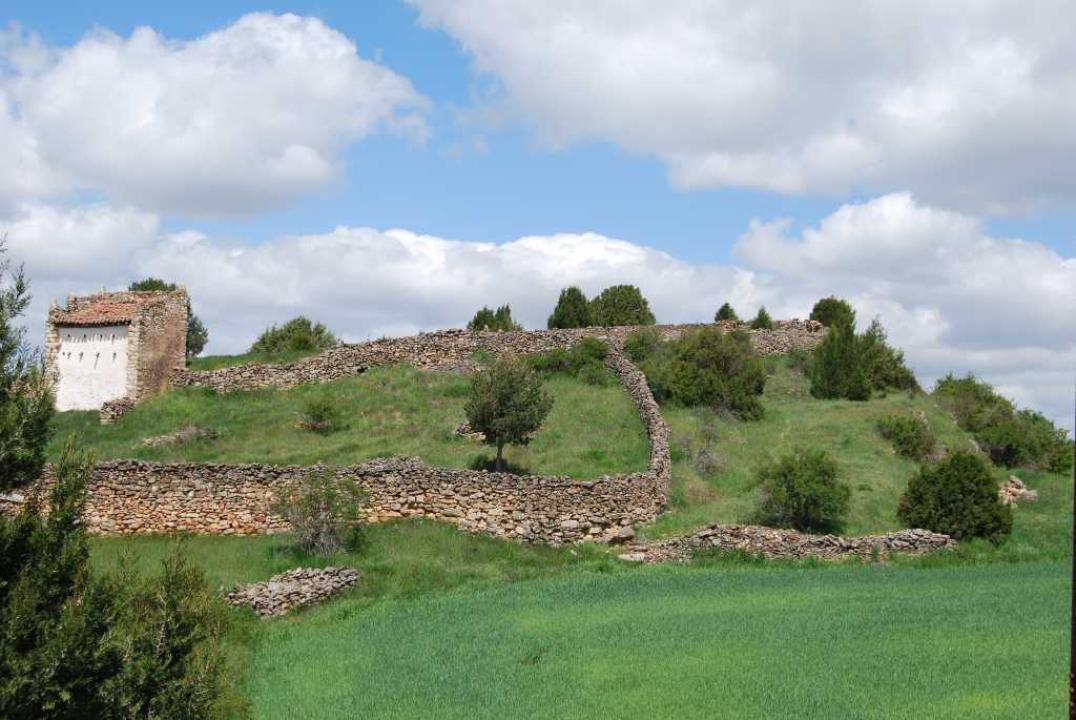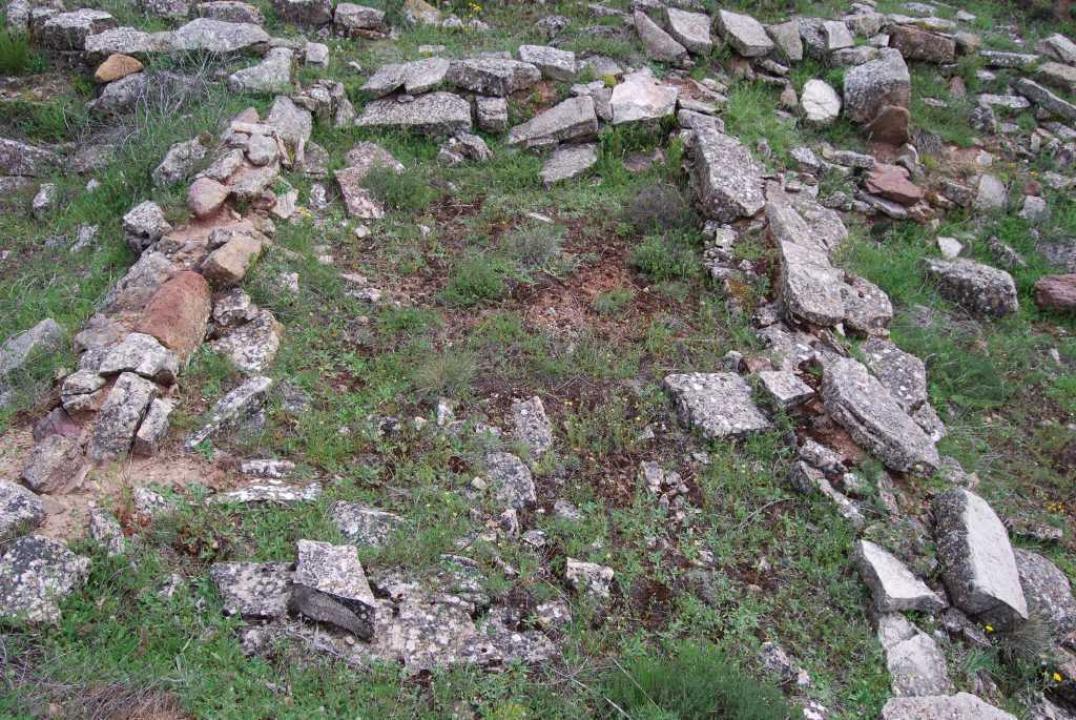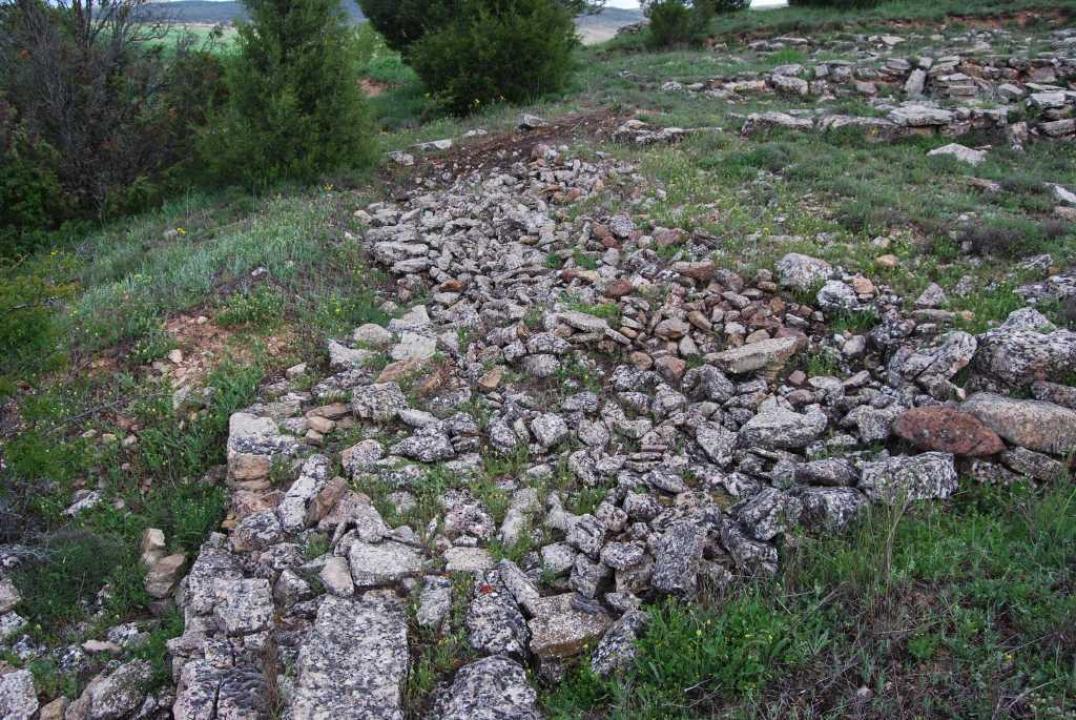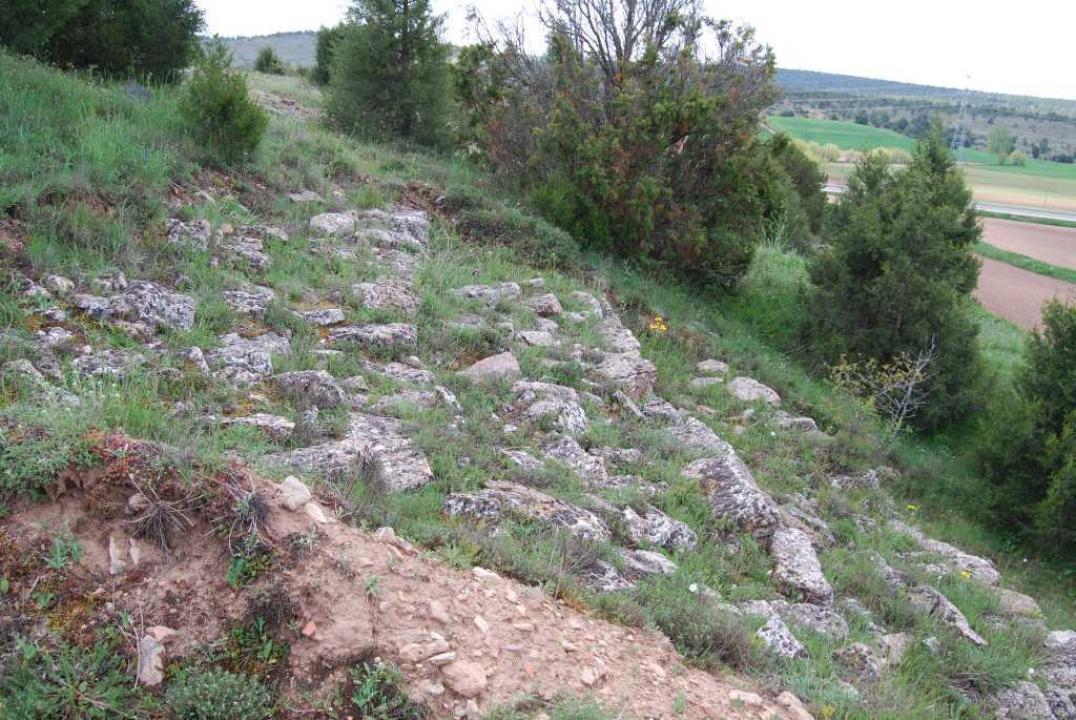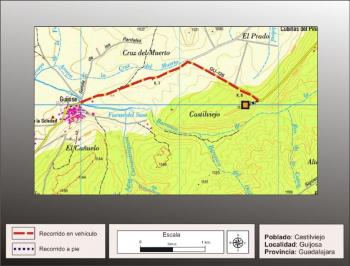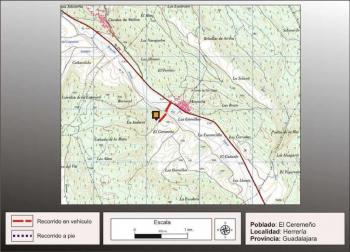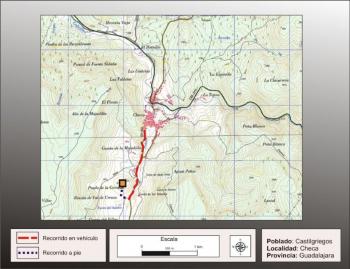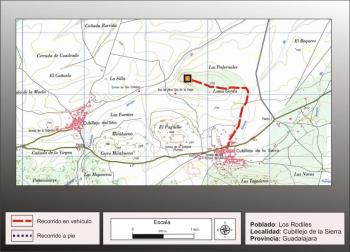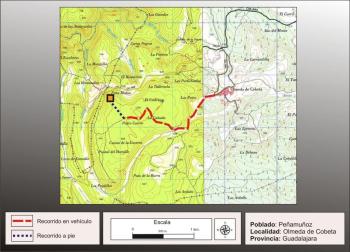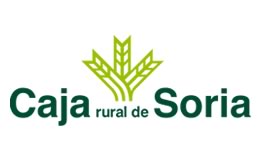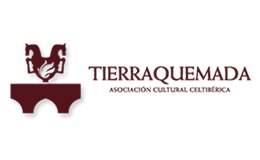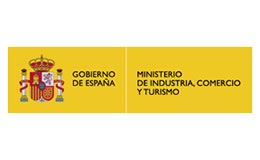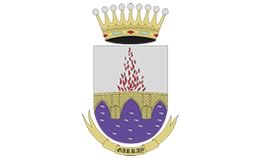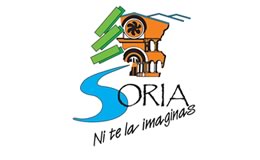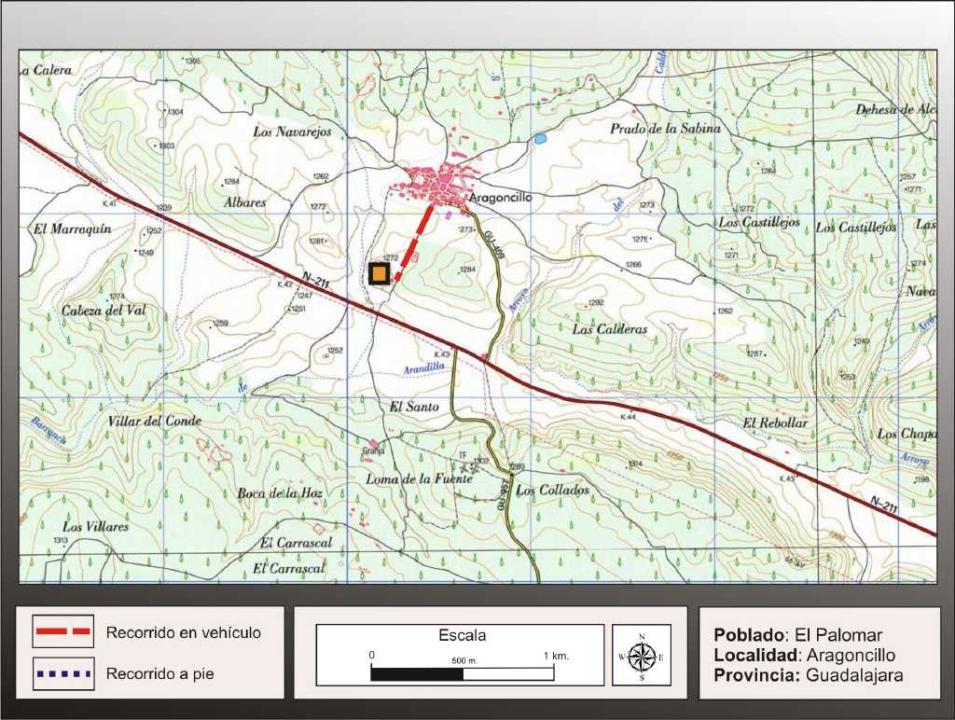

Getting there
The hill where the reservoir is located near the N-211, coming from Alcolea this road must turn left to get to Aragoncillo and about 200 meters from the road you come to ski hill
Situation and location
Located south of the town of Aragoncillo, a small circular mound with a height of 1.260m above sea level and about 30m above the river Arandilla.
Research
Were carried out systematic excavations over four years (1990-1994), under the direction of Lourdes Cortés and Jesús A. Arenas.
CASTRO TO VISIT
Settlement characteristics
The surface of this settlement is 9.700m2 of which have been excavated an area of 412m2, which has helped to identify two distinct areas, chronological, morphologically and functionally.
Phases of occupation
Archaeological excavations have found three phases of occupation:
- a first in the sixth century BC, the known remains of a wall and some of angular buildings wall.
- a second during the third century C., ending with the Roman conquest, by mid-century BC It is the most important settlement.
- a third or final occupancy, which presents a somewhat uneven, as it has been affected by surface erosion of the site (especially by modern plows), which is felt by some restructuring and overlapping construction phase above.
The approach to urban and recognizable structures in the visit to the site relate mostly to the second phase.
The wall
He was surrounded by a wall of between 2.9 and 3.5 m wide. The steep dip of the hill forced to make a solid work of terracing (M2) for stability of the land (give the impression of successive lines of wall), that would certainly build the walls and houses, which were based on it.
The interior space
Five spaces were found related to dwelling places, leaning on the wall for the rear (missing the back third of the houses destroyed by erosion), which is accessed from the inside lane, discovered in part.
Three of these houses (Nos. 2, 3 and 5) have homes ready in central and compartmentalization have at least two spaces, one front, dedicated to grinding and other domestic and / or craft, while the back space seems be dedicated to home / bedroom (they differ from home plate) and pantry.
Other two sites (Nos. 1 and 4) do not have any kind of partitioning, and they had the movable objects may correspond to pens, which urbanistically alternate to housing. These houses have provided abundant ceramics made either by hand or on a wheel. The roofs were of vegetal elements and blanketed with mud, probably with gabled ridge disposed on the gutter wall between two houses
Socio-economic
The presence within the homes of plenty of bones for limbs of animals, primarily beef (2.860kg have calculated some of Bos taurus) and sheep / goat (about 2.860kg), has led researchers to think this field that their presence is solely for food waste, but subject to meat preserved with traditional methods such as salting and drying. Probably, not only to meet domestic needs, but to generate surpluses exchangeable for other elements necessary for the inhabitants of this town, which explains the importance of livestock between these populations. These meat scraps should be added some provided by hunting, which has documented rabbit and deer.
The necropolis of Cerro de los Santos (not visited)
Location
This cemetery Celtiberian, connected to the village of El Palomar, was found in 1987 and was excavated in the early nineties (1990-1994).
Is at the bottom of a narrow valley at the foot of the hill where stands the village, which is separated about 500m to the south, on a plain planted with cereal, whose activity was altered greatly archaeological .
Features of the cemetery and chronology
Excavated 30 tombs could be incinerated, with some orderly arrangement in parallel lines, corresponding to the two phases of use of the cemetery, as are the village:
-a first, during the sixth century and perhaps the beginning of V century BC, where the cremation ashes were buried directly in a hole, accompanied by the remains of outfit and platform offerings with abundant remains of fauna and weapons, however, some graves were tucked ashes in urns or pottery vessels.
"A second phase, during the III-II century a. C., the ashes were introduced in an urn or ceramic bowl and trousseau items when ever introducing metal elements displayed no weapons and even, sometimes, the offerings have been replaced by animal fluids, as inferred from the volume of pitchers and cups located
This necropolis and the contents of their tombs have also completed many aspects of funeral ritual, the changes in social organization and the concept of wealth from the people who lived in El Palomar.
Bibliography
- Arenas, J.A. (1999): The protohistoric necropolis of "La Cerrada de los Santos (Aragoncillo, Guadalajara. Some considerations about their archaeological context. II Symposium on the Celts: Necropolis Cel. Institution Fernando" El Católico ", Zaragoza.
- Arenas, J.A. (1999): The Iron Age in the central Iberian System, Spain. BAR International Series 780, Oxford.
Contacts and schedule
- The village is not signposted and access is free.
- The cemetery is not visited


